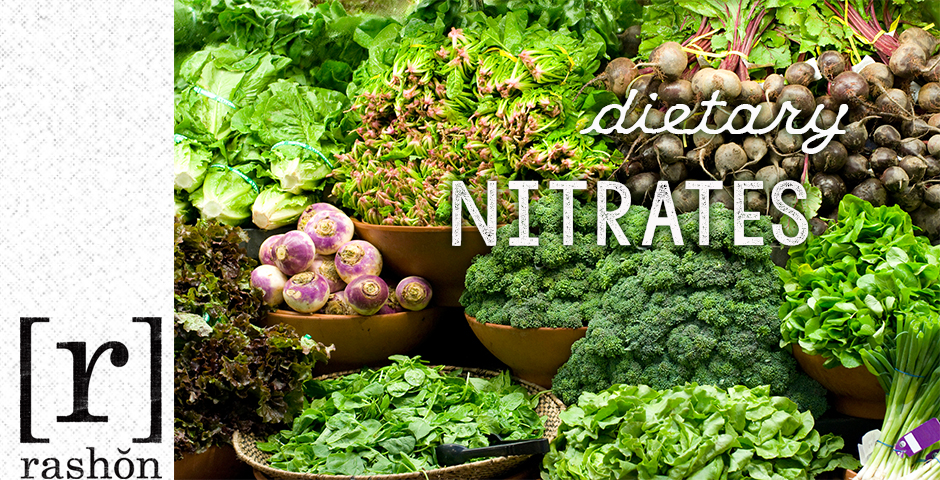The subject of dietary nitrates can be pretty complex, but we’re going to break it down into its most simplest terms.
Nitric oxide (NO) is an important gas that occurs in the lining of our blood vessels. NO is important for all cellular functions, and is critical for the health of our blood vessels. NO opens up (dilates) the blood vessels, increases blood flow to the brain, prevents clots, aids in strong heart contraction (beats), lowers blood pressure and reduces inflammation. All cardiovascular disease is marked by low nitric oxide levels.
Our bodies are able to convert dietary nitrates into NO, which makes these foods vitally important for boosting NO levels and supporting heart health.
Where to Find: Dietary Nitrates
Here is a quick overview of the nitrate content in some vegetables and fruits:
Very High
Arugula, spinach, red beetroot, celery, collards, cress, chervil, dark leaf lettuce
High
Celeriac, Chinese cabbage, chard, endive, fennel, kohlrabi, lambs quarters, leek, mustard greens, parsley, white radish
Moderate
Cabbage, dill, salad mix, savoy cabbage, string beans, turnip
Low
Broccoli, carrot juice, cauliflower, chicory, cucumber, eggplant, pumpkin, tomato, zucchini, pomegranate juice, vegetable juice
Very Low
Artichoke, asparagus, broad bean, carrot, eggplant, garlic, onion, green bean, mushroom, peas, peppers, potato, summer squash, sweet potato, banana, cranberry juice, pomegranate, watermelon
How to Incorporate: Dietary Nitrates
Each day you should strive to be eating a minimum of 2-3 cups of leafy greens (spinach, arugula, dark salad mix, collards) and 2-3 cups of crunchy vegetables (broccoli, string beans, celery, asparagus). When you look through the list above, you see that many of things you’re already eating each day are great sources of dietary nitrates. Make sure you keep up your leafy green and crunchy veggie intake each day for the heart-protective benefits of dietary nitrates!
What foods have you eaten today that are good sources of nitrates?




0 Comment